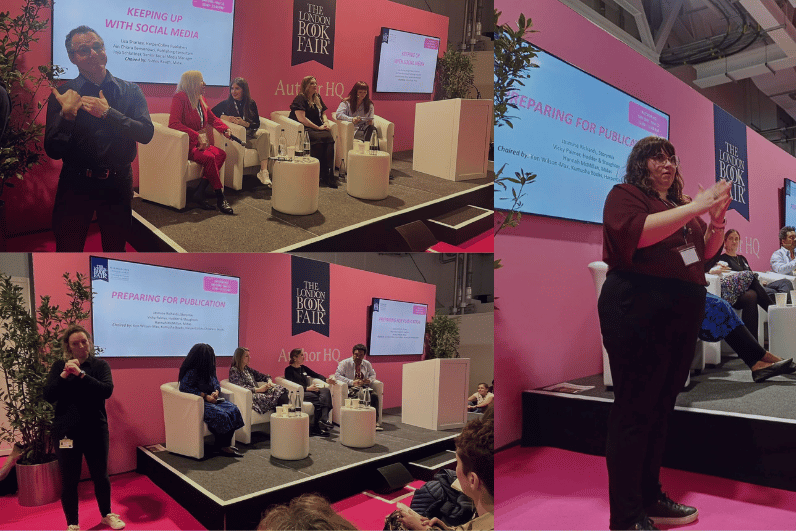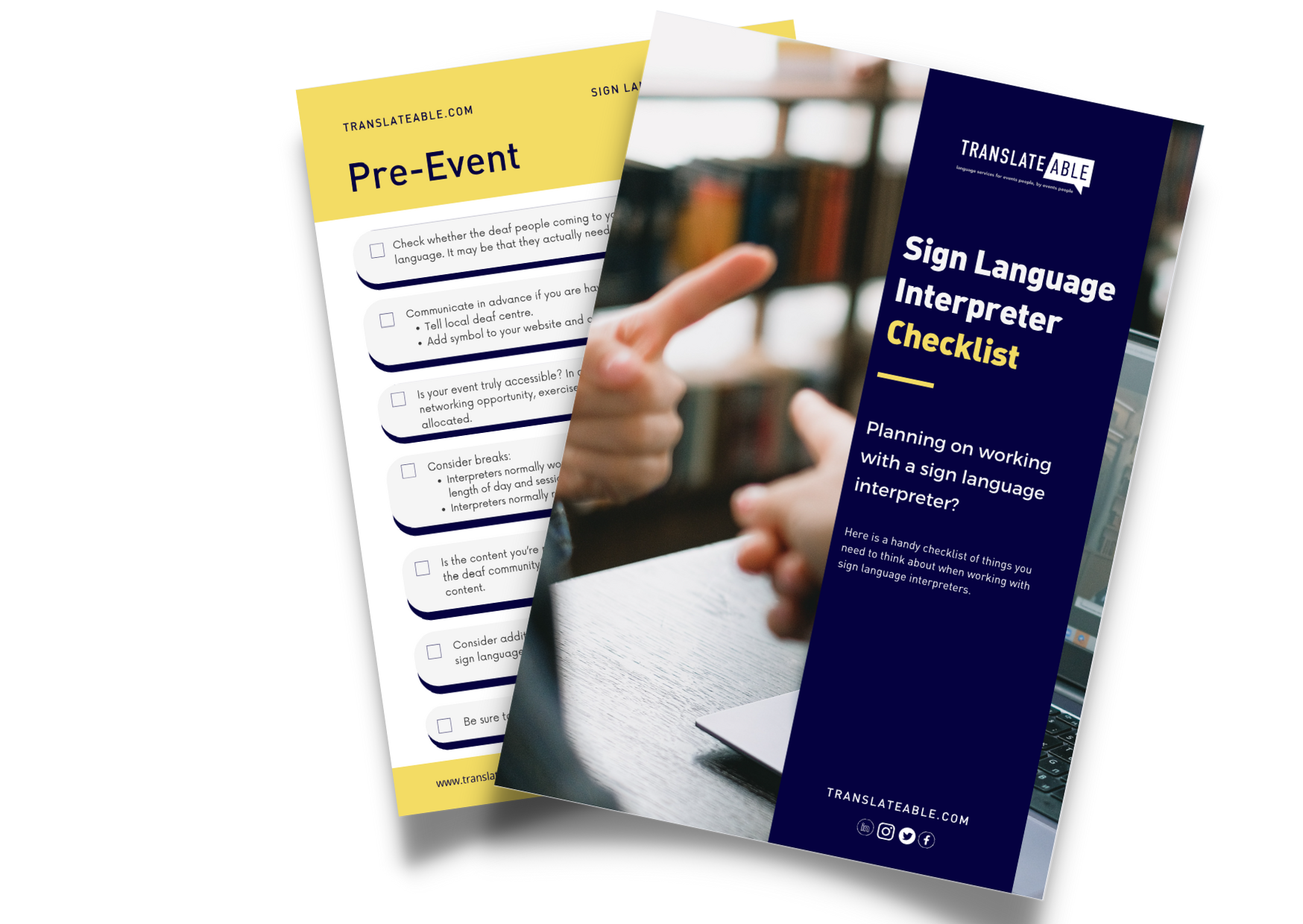Julia Danmeri, CEO of TranslateAble shares key insights she wishes she knew about sign language interpreters as an event organiser.
It’s great to see so many more events including sign language as part of their seminar programme. At The London Book Fair, we recently enjoyed supporting some of their key seminar content with British Sign Language interpreters, as well as Curious Minds Awards, Accountex and, Kenyan Sign Language interpreters at Clarion Events’ African Energy Forum back in 2023.
Having worked in event ops for 20 years, and hiring countless sign language interpreters during this time, I thought I knew how the process worked.
Since transitioning from event organiser to running an event language agency, I’ve discovered that there’s so much more to sign language interpreting than I ever realised. I know from the frequency of asked questions from organisers, that whilst sign language is becoming more popular, it is often quite a misunderstood service.
Here’s my top tips on how to better leverage this service and create a more inclusive experience for your event attendees.
Did you know that deaf people assume they aren’t catered for at most events, so don’t just turn up without checking in advance?
If you’re including a sign language service at your upcoming event, be sure to advertise your event directly to the deaf community. Social media is one option as is via the local deaf centre. Before you get started on promoting your event to this community, remember to consider whether content is valuable to sign language users and if they feel represented, among your speakers for example.
Did you know that if a sign language interpreter has been booked but there are no deaf people, they normally wait for approximately 45 minutes before leaving?
Sign language interpreters are in high demand and get booked up really quickly, so the time they spend sitting around at your event may mean a deaf person isn’t getting the service they need. If you aren’t expecting any deaf people, don’t have interpreters sitting around ‘just in case’, just because you think it makes your event look accessible.
Just because you have sign language interpreters at your event, it doesn’t mean your event is accessible to deaf people.
For your event to be truly accessible, the entire event must be available for everyone, including networking events and seminar content . Just because you’re signing the keynote theatre for example, doesn’t mean your event is, or can be advertised as accessible.
Sign language interpreters must be an integrated part of your event.
Where interpreters are positioned and how they’re catered for must be considered
An example we commonly encounter is with sign language interpreters being asked to stand in the corner of a conference room because it affects the aesthetics of the stage. This could make deaf people in attendance feel sidelined,. One sign language interpreter explained: : “It would be like asking for a ramp, allowing wheelchair access to be put around the back of a building as it does not look aesthetically pleasing around the front. Having a BSL interpreter so far away from what is going on can appear tokenistic rather than genuinely being about accessibility.”
Sign language interpreters are passionate about the work they do
The interpreters you’ll be working with for your event will mostly likely be part of a passionate community who have likely been fighting for access for the deaf community for some time. Remember they are more than just an event supplier and it is important to recognise that how you manage them at your event has the potential to affect their work and their reputation. Without meaning to, you can offend or disrespect their profession, as well as sign language users.
Download our Sign Language Interpreters Checklist for free
This quick checklist is jam-packed with information that we hope brings some clarity on things you need to know about sign language interpreters.
We’re here to help you with this checklist.
I’d be really interested to hear if you’d add anything or if you have any comments.
If you…
- Are in need of Sign Language Interpreting services for the first time and don’t know where to start.
- Regularly work with Sign Language Interpreters but in need of one in a language new to you.
- Simply want to know more about how we work.
… feel free to contact us now at info@translateable.com or complete the form to request a quote or get more information. We’d be happy to have a chat about how we may assist you with your interpreting needs and more!




